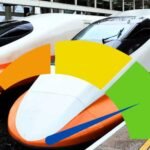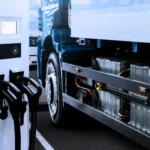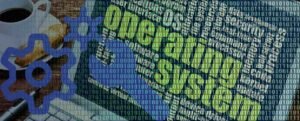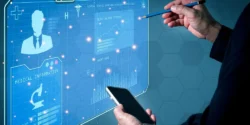Clean transportation is a beacon of hope for a more sustainable and environmentally friendly mobility solution. This comprehensive exploration delves into the intricacies of clean transportation, unraveling its fundamental principles, key components, recent innovations, notable applications, and transformative impact on steering toward a greener and more responsible future.
Understanding Clean Transportation
Clean transportation represents a paradigm shift in the way we move people and goods. It prioritizes environmental sustainability and minimizes the ecological footprint associated with traditional transportation methods. At its core, it encompasses a range of technologies and practices designed to reduce or eliminate harmful emissions, promote energy efficiency, and contribute to overall environmental well-being.
Key Components of Clean Transportation
The core components of clean transportation contribute to its functionality, efficiency, and overall impact on the environment:
- Electric Vehicles (EVs): Electric vehicles, powered by batteries or fuel cells, stand as one of the cornerstones of clean transportation. They produce zero tailpipe emissions and are instrumental in reducing reliance on fossil fuels.
- Public Transit and Shared Mobility: Efficient public transit systems, coupled with shared mobility services, promote the optimal use of resources, decreasing the number of individual vehicles on the road and decreasing overall emissions.
- Alternative Fuels involve using alternative fuels such as hydrogen, compressed natural gas (CNG), and biofuels. These fuels produce fewer greenhouse gas emissions compared to traditional gasoline or diesel.
Recent Innovations in Clean Transportation
Recent innovations have propelled clean transportation to new heights, addressing key challenges and pushing the boundaries of performance:
Autonomous and Connected Vehicles
Integrating autonomous and connected vehicle technologies optimizes traffic flow, reduces congestion, and enhances fuel efficiency. These innovations contribute to a more streamlined and environmentally friendly transportation ecosystem.
Smart Infrastructure and Mobility Solutions
Smart infrastructure, including intelligent traffic management systems and advanced mobility solutions, enables more efficient transportation planning and resource utilization. This results in reduced energy consumption and improved overall sustainability.
Sustainable Aviation and Maritime Solutions
Innovations in aviation and maritime transportation focus on developing cleaner fuels, electrification, and improved efficiency to minimize the environmental impact of these critical sectors.
Notable Applications of Clean Transportation
Clean transportation extends beyond personal mobility, contributing to various sectors and industries:
Urban Mobility and City Planning
Initiatives like these are crucial in urban settings for mitigating air pollution, reducing traffic congestion, and fostering sustainable city planning. Electric buses, bike-sharing programs, and pedestrian-friendly infrastructure contribute to cleaner and more livable cities.
Commercial and Freight Transportation
Adopting clean transportation solutions in commercial and freight sectors, such as electric delivery vehicles and sustainable logistics practices, contributes to a significant reduction in carbon emissions associated with transporting goods.
Intermodal Transportation
Intermodal transportation integrates different modes of clean transportation, such as trains, buses, and bicycles, offering seamless and sustainable travel options for commuters.
Challenges in Clean Transportation
While clean transportation has witnessed significant advancements, several challenges persist, impacting widespread adoption and efficiency:
Infrastructure Development
Establishing comprehensive charging or refueling infrastructure for electric and alternative fuel vehicles remains a significant challenge. Governments and private entities must invest in building a robust network to support the widespread adoption of clean transportation.
Cost and Affordability
The initial cost of clean transportation technologies, such as electric vehicles, may be higher than traditional alternatives. Efforts to reduce manufacturing costs and provide financial incentives are crucial for encouraging broader consumer adoption.
Policy and Regulation
Clear and supportive policies and regulations are essential to create an environment conducive to clean transportation adoption. Governments must incentivize developing and deploying cleaner technologies while penalizing environmentally harmful practices.
Future Trends in Clean Transportation
As technology continues to advance, the future of clean transportation promises exciting trends that will further redefine the capabilities and applications of sustainable mobility:
Electrification of Public Transportation
Increased electrification of public transportation, including buses and trains, will reduce emissions and improve air quality in urban areas.
Integration of Renewable Energy
Integrating renewable energy sources, such as solar and wind power, into its systems will enhance sustainability and reduce dependence on non-renewable energy.
Circular Economy Principles
Adopting circular economy principles in the manufacturing and operation clean transportation technologies will maximize resource efficiency and minimize waste, contributing to a more sustainable lifecycle.
Conclusion
Clean transportation stands at the forefront of the global effort to create a more sustainable and eco-friendly future. From electric vehicles and alternative fuels to smart infrastructure and interconnected mobility solutions, the impact of it is far-reaching. Despite existing challenges, ongoing innovations in autonomous technologies, smart infrastructure, and sustainable aviation signal a promising future for clean transportation. As research and development continue to push the boundaries of what is possible, it is poised to become a necessity and a driving force in shaping a greener and more responsible era of mobility.”










